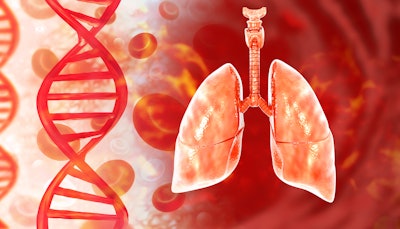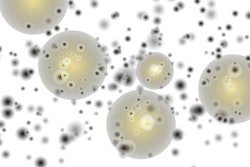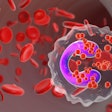
Scientists have discovered a causal link between elevated levels of the enzyme cathepsin L2 and an increased risk of asthma, offering new insights into the biological mechanisms behind the chronic respiratory disease.
The discovery was the result of the Chinese study, “Causal Association Between Cathepsins and Asthma: A Mendelian Randomization Study,” recently published in Nature. Researchers used Mendelian randomization (MR) to explore the causal relationship between nine cathepsins (a group of proteolytic enzymes) and asthma. Using genetic data from more than 266,000 individuals, researchers found that higher genetically predicted levels of cathepsin L2 were significantly associated with an increased risk of the pathogenesis of asthma, independent of other known risk factors. This finding opens the door to new therapeutic strategies targeting this enzyme.
The researchers used data from the INTERVAL study and the FinnGen consortium, applying both univariate and multivariate MR techniques. These methods allowed them to simulate randomized controlled trials using genetic variants as proxies for cathepsin levels, thereby minimizing confounding factors and reverse causality.
Among the nine cathepsins in review, only cathepsin L2 showed a statistically significant association with asthma risk. The odds ratio (OR) for asthma increased by approximately 5.8% for each genetically predicted unit increase in cathepsin L2 levels. Reverse MR analysis ruled out the possibility that asthma itself causes elevated cathepsin L2 levels, strengthening the case for a one-way causal relationship.
According to researchers, cathepsin L2 is known to be highly expressed in epithelial tissues and is involved in immune responses and extracellular matrix degradation. This is a process that is central to asthma’s hallmark airway remodeling and inflammation.
Although the effect size is modest, the population-level impact could be substantial given asthma’s high prevalence, researchers wrote. As such, cathepsin L2 could serve as a biomarker or even a therapeutic target in asthma management.
The study focused exclusively on individuals of European ancestry, which may limit the generalizability of the findings. The authors called for further research in more diverse populations and in-depth mechanistic studies using animal models or human airway cells.
They also suggested that advanced imaging and artificial intelligence (AI) techniques could be used to map the spatial relationship between cathepsin L2 expression and structural changes in the lungs, potentially validating the enzyme’s role in airway remodeling.
According to researchers, this study marks a significant step toward understanding the molecular underpinnings of asthma and tailoring treatments to individual biological profiles. If future studies confirm these findings, cathepsin L2 inhibitors could become a new class of asthma therapeutics, they wrote.























